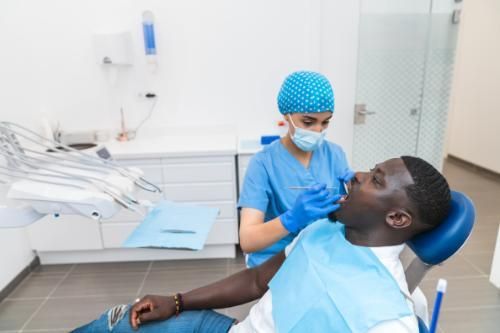Contact Information
smiles@mylakesidedentist.com
15400 19 Mile Rd, Clinton Twp, MI 48038, United States of America
Serving Clinton Township and Surrounding Areas
info@mylakesidedentist.com
(586) 228-0909
Top Tips for a Successful Exam Dentist Visit
12 Minute Read
Wondering what to expect at your exam dentist visit? This article breaks down the process, from the initial cleaning to the detailed evaluation by your dentist. We’ll also provide preparation tips to ensure a comfortable and productive experience. Read on to learn how you can make the most of your next dental exam.
Key Takeaways
- Regular dental exams are essential for preventing serious oral health conditions like tooth decay and gum disease, with components including cleaning by a hygienist, x-rays, and a visual assessment by the dentist.
- Proper preparation for a dental exam, including following a pre-exam checklist and managing dental anxiety, can enhance the overall experience and effectiveness of the visit.
- Understanding dental insurance coverage and potential out-of-pocket costs is important for budgeting dental care, as insurance plans may vary in their coverage of routine exams and additional procedures.
Understanding a Dental Exam
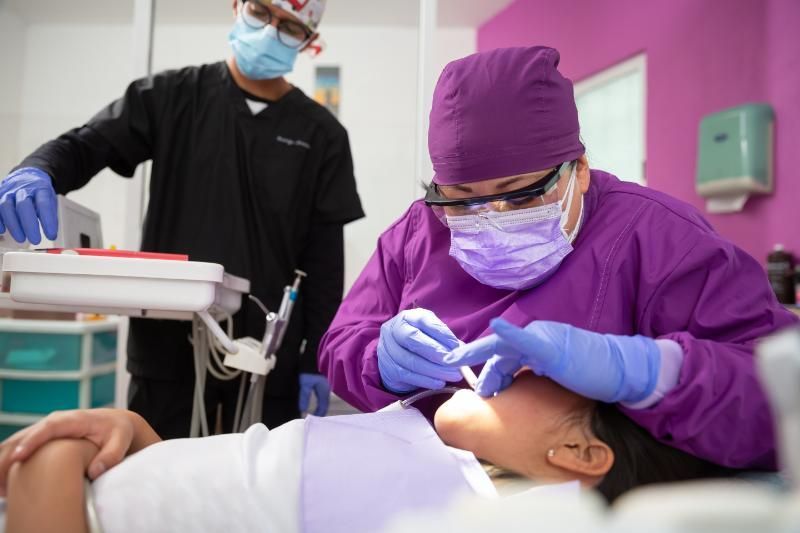
A dental exam is crucial for maintaining overall oral health. This comprehensive assessment focuses on teeth, gums, and related structures, ensuring that any potential issues are identified and addressed promptly. Regular dental exams are key to preventing serious conditions like tooth decay and gum disease, which can escalate if left untreated.
During a dental exam, the process typically involves a thorough check-up of your teeth and gums. The examination is divided into several components, including the initial cleaning by a dental hygienist and a detailed evaluation conducted by the dentist. Understanding these components and the importance of your medical history can help you better prepare for your visit and make the most of your time in the dental chair.
Components of a Dental Exam
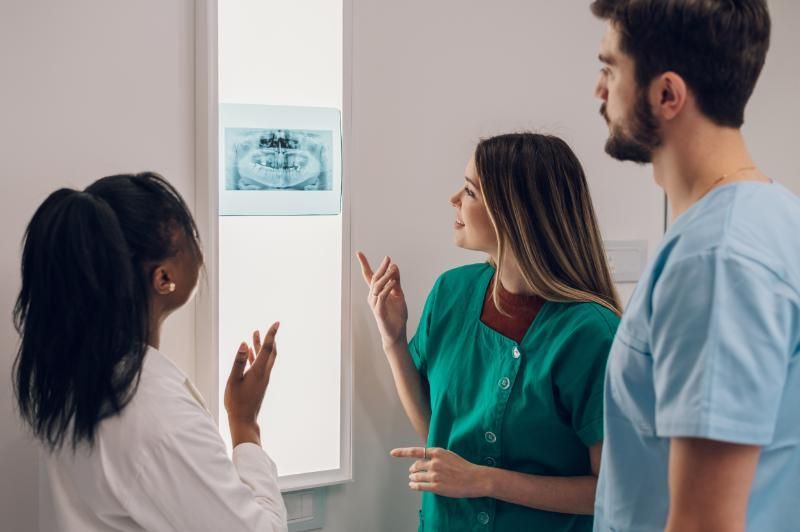
Each dental exam begins with meeting the dental hygienist, who plays a pivotal role in your oral care. The hygienist starts with scaling, a process that involves removing plaque and tartar buildup from your teeth. This step is vital for maintaining dental hygiene and preventing periodontal diseases. After scaling, the hygienist uses polishing tools and a gritty paste to clean and shine your teeth, making them smooth and less prone to plaque accumulation.
Dental x-rays, often performed before the dentist’s visual examination, are another vital component of the exam. These x-rays can reveal hidden cavities, gum disease, and bone loss that are not visible to the naked eye. Early identification of these issues allows your dentist to recommend appropriate treatments before they escalate.
The final part of the dental exam involves a visual examination by the dentist. This includes checking for decay, stains, changes in the gum line, and the margins around fillings. The dentist may use an explorer to probe for soft spots in the enamel and other areas of concern. This thorough oral exam ensures that any potential issues are identified and addressed promptly, helping you maintain optimal oral health.
Importance of Medical History
Updating your medical history is a crucial step in any dental exam. This information helps your dentist identify health conditions that could affect your dental treatment. Discussing health conditions like allergies or previous surgeries can significantly impact diagnosis and treatment planning.
Being open about any dental health concerns allows your dentist to tailor their approach, ensuring you receive the most effective and safe care possible.
Preparing for Your Dental Exam
Preparation is key to a successful dental exam. Start by confirming your appointment details and any specific instructions provided by your dentist. Scheduling your dental appointment during a less busy time can help minimize stress and ensure you’re calm and focused. Proper preparation not only helps your dentist provide better care but also enhances your comfort and experience.
Two critical aspects of preparation include following a pre-exam checklist and managing dental anxiety. Addressing these areas ensures a smoother and more efficient dental visit.
Pre-Exam Checklist
A pre-exam checklist can significantly improve your dental visit. Start by brushing and flossing your teeth thoroughly before your appointment to ensure your mouth is clean. Bring necessary documents, such as your patient questionnaire about oral health history, to provide your dentist with all relevant information.
Being well-prepared aids your dentist in delivering better care and makes your experience more comfortable.
Managing Dental Anxiety

Dental anxiety is a common issue that many patients face, but there are effective ways to manage it. Practicing deep breathing exercises can help reduce feelings of anxiety before your dental visit. Deep breathing promotes a sense of calm and can be combined with mindfulness techniques to stay present and relaxed. Visualization techniques, where you picture a calm and safe place, can also be effective in managing anxiety.
Discussing your fears and concerns with your dentist can significantly alleviate anxiety. Open communication allows your dentist to understand your needs and provide reassurance and support throughout the process.
Implementing these relaxation techniques and having a conversation with your dentist can lead to a less stressful and more positive dental experience.
What Happens During a Dental Exam?
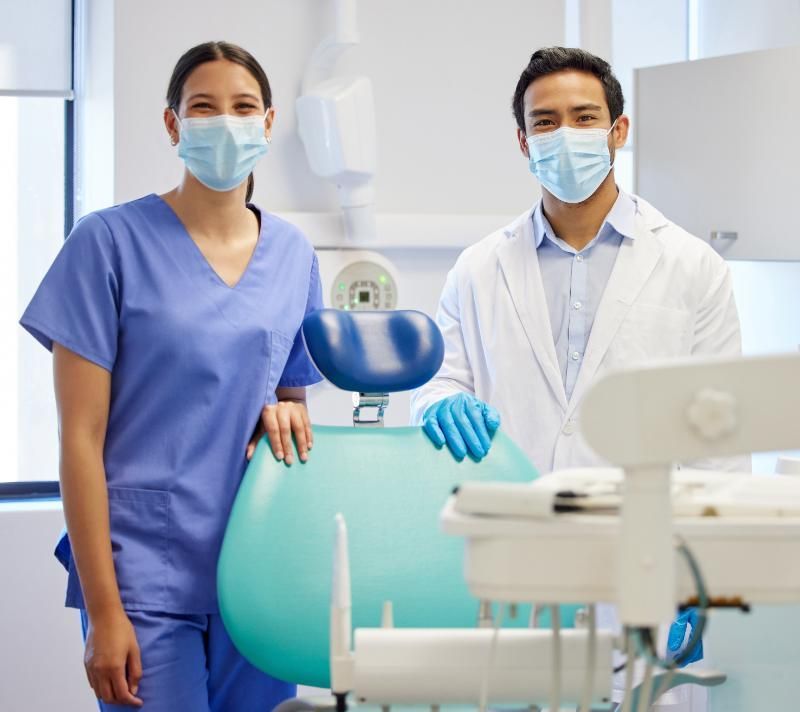
Understanding what happens during a dental exam can demystify the process and make you feel more at ease. Typically, the exam begins with a thorough cleaning by the dental hygienist. This may include scaling to remove plaque and tartar, followed by polishing to clean and shine your teeth. Dental x-rays might also be taken to identify potential or existing conditions that aren’t visible during the visual examination.
Following the cleaning, the dentist will conduct a detailed assessment of your oral health. This includes checking for signs of tooth decay, gum disease, and other abnormalities. If the dentist finds anything unusual, they will inform you and may recommend further procedures or refer you to a specialist.
Regular dental visits are essential for preventing and treating oral diseases, ensuring optimal oral health.
Role of the Dental Hygienist
The dental hygienist plays a vital role in your dental exam. During the initial part of the exam, the hygienist performs scaling to remove plaque and tartar buildup from your teeth. This step is essential for preventing periodontal diseases and maintaining oral health. After scaling, the hygienist uses polishing tools with a gritty paste to clean and shine your teeth, making them smooth and less prone to future plaque accumulation.
In addition to cleaning, the dental hygienist conducts an initial check-up, looking for any signs of dental issues that need further attention. This initial examination helps in identifying potential problems early, allowing for timely intervention and treatment.
Dentist’s Examination
The dentist’s examination is a critical part of the dental visit. During this process, the dentist visually examines your mouth for signs of decay, stains, changes in the gum line, and the condition of fillings. Using an explorer, the dentist checks each tooth for soft spots in the enamel and other areas of concern. Early detection of cavities and other issues can prevent severe complications like infections or tooth loss.
Discussing your concerns with the dentist is also important. If you feel anxious about the exam, let your dentist know beforehand. They can offer ways to help alleviate your anxiety, ensuring a more comfortable and positive experience.
Common Issues Detected in Dental Exams
Regular dental exams are essential for identifying common oral health issues such as tooth decay, gum disease, and oral cancer. Tooth decay often appears as dark spots or holes in the teeth, whereas gum disease may cause swollen or bleeding gums. Early detection of these issues can prevent the need for more extensive and costly treatments.
Dentists also perform oral cancer screenings during routine exams to detect any unusual lumps or sores that could indicate cancer. Consistent home care, including daily brushing and flossing, helps minimize plaque buildup, reducing the risk of cavities and gum disease. Fluoride toothpaste can further strengthen enamel and protect against tooth decay.
Tooth Decay and Cavities
Tooth decay is caused by acids produced by bacteria that erode the tooth enamel, resulting in cavities. Symptoms of tooth decay include sensitivity, pain while eating, and visible holes in the teeth.
Even if your teeth appear healthy, it’s essential not to skip a dental exam, as early detection of cavities can prevent more serious issues. If a cavity is found, another appointment will likely be needed for treatment.
Gum Disease

Gum disease, starting as gingivitis, is characterized by swollen and bleeding gums. It can progress to more severe periodontal disease if left untreated. Measuring gum pocket depth helps determine the extent of the disease.
Avoiding tobacco products and quitting smoking are vital steps in reducing the risk of gum disease and improving overall oral health.
Oral Cancer Screening
Oral cancer screenings are a vital part of dental exams, helping in the early detection of potential cancerous changes. During the screening, dentists conduct a visual examination of the soft tissues, looking for lesions, lumps, and discolorations. If any unusual spots are found, the dentist may refer you to an oral surgeon or recommend a biopsy for further evaluation.
If you believe you need an oral cancer screening, discuss it directly with your dentist.
Post-Exam Steps
Maintaining good oral hygiene at home after your dental exam is essential to prevent further issues. Follow any specific aftercare instructions provided by your dentist to ensure proper recovery and ongoing oral health. Discuss any oral health problems and treatment options with your dentist to understand the next steps in your dental care journey.
Scheduling your next appointment or discussing treatment options is crucial after your exam. This proactive approach helps in addressing any identified issues promptly and maintaining your overall oral health. Advanced gum disease can lead to tooth loss and has been linked to systemic health issues such as heart disease, making follow-up care even more important.
Scheduling Follow-up Appointments
Scheduling follow-up appointments is essential for monitoring your oral health and ensuring any identified issues are addressed promptly. Based on your dental exam, your dentist may recommend additional treatments and follow-up visits to address specific concerns.
Scheduling these appointments proactively helps you stay on top of your dental health and avoid future complications.
Implementing Treatment Plans
Adhering to prescribed treatment plans is crucial for effective oral health management. Improving brushing and flossing habits can address certain oral health problems and strengthen your oral hygiene routines.
Consistency in following these practices is key to achieving and maintaining optimal oral health.
Financial Considerations
Understanding the financial aspects of dental exams can help you plan and budget for your dental care. Facility fees may vary by location and need to be paid before certain procedures, such as the ADEX exam. Dentists will provide an estimate of the cost ahead of time for any additional procedures needed, allowing you to plan accordingly. It’s essential to discuss costs with your dentist and understand what is covered by your insurance to avoid unexpected expenses.
Dental insurance plans usually include coverage for routine dental maintenance. This often encompasses periodic oral examinations.
However, coverage details can vary, so it’s essential to review your plan and gather all necessary insurance information before your appointment. Understanding both insurance coverage and out-of-pocket costs can help you manage the financial aspects of your dental care effectively.
Dental Insurance Coverage
Most dental insurance plans cover routine dental exam, usually allowing for two exams per calendar year. However, not all plans include coverage for procedures like oral cancer screenings, so it’s important to review your plan details. Having your insurance information and identification ready for your dental appointment can streamline the process. Reviewing your plan documents beforehand can help minimize costs associated with dental check-ups.
Patients should gather their insurance information and any referrals required before their dental appointment. This preparation ensures that you are fully aware of your coverage and can avoid any unexpected costs.
Out-of-Pocket Costs
Understanding out-of-pocket costs is essential for budgeting for dental care, particularly during exams and treatments. Dental plans can significantly influence the coverage for various procedures beyond routine exams.
For instance, some procedures may have additional fees, such as a Typodont Fee per procedure, typically around $150. Being aware of these costs can help you plan and manage your dental care expenses effectively.
Special Considerations for Different Patient Groups
Dental exams should accommodate the unique needs of specific demographics, such as children, pregnant women, and the elderly. Tailoring the approach to these groups ensures comfort and thoroughness during the exam. For pediatric patients, creating a positive environment is crucial to alleviate fear and encourage good dental habits from a young age.
Pregnant women should inform their dentist about their condition, as certain precautions and adaptations may be necessary during exams. Patients with special needs often require additional time and tailored approaches during dental exams to ensure comfort and thoroughness.
Understanding these considerations can help provide better care and a more positive experience for all patients.
Pediatric Dental Exams
Early dental care is crucial for preventing future dental issues in children. Babies need to see a dentist for the first time within six months after getting their first tooth. Alternatively, they should have their first appointment by their first birthday.
Children may require different examination techniques and equipment to suit their smaller mouths and developing teeth. Specific behavioral techniques may be necessary to help children relax during dental visits, enhancing their overall experience.
Dental Exams During Pregnancy
Pregnant patients should inform their dentist about their condition, as certain procedures and medications may be restricted during this time. Dental x-rays are generally not recommended during pregnancy unless it’s an emergency.
Maintaining oral health during pregnancy is crucial, as hormonal changes can increase the risk of gum disease and affect both maternal and fetal health.
Maintaining Oral Health Between Exams
Maintaining oral health between dental exams is vital for preventing issues such as cavities and gum disease. Regular dental check-ups help in early identification of oral issues, ensuring timely treatment and prevention of more severe problems. Proper oral hygiene practices and lifestyle habits play a significant role in maintaining overall oral health.
It’s particularly important for pregnant women to maintain oral health, as periodontal disease can affect both maternal and fetal health. Hormonal changes during pregnancy can increase the risk of gum disease, making regular dental care and good hygiene practices even more critical.
Daily Oral Hygiene Practices
Daily oral hygiene practices are the cornerstone of maintaining good oral health. Brushing with gentle, circular strokes while angling the bristles towards the gumline ensures better cleaning between gums and teeth. Using interdental cleaning devices can be more effective than traditional flossing for maintaining oral health.
Improved oral hygiene practices are commonly recommended to address various dental issues and maintain overall oral health.
Lifestyle Habits for Oral Health
Lifestyle habits significantly impact oral health. Maintaining a balanced diet while limiting sugary snacks and beverages can enhance oral health. High sugar intake is linked to an increased risk of tooth decay, so limiting sugary foods and drinks is crucial.
A balanced diet rich in nutrients can help strengthen teeth and gums, contributing to overall oral health.
Summary
In conclusion, a successful dental exam involves understanding its components, preparing adequately, managing anxiety, and following post-exam steps. Regular dental visits are essential for early detection and treatment of oral health issues. By maintaining good oral hygiene and being mindful of financial considerations, you can ensure your dental health remains in top condition. Remember, a healthy smile is a reflection of overall well-being, so make your dental care a priority.
Frequently Asked Questions
-
What should I bring to my dental exam?
You should bring your patient questionnaire regarding your oral health history and your dental insurance information. Having these documents ready will help facilitate your dental exam.
-
How can I manage dental anxiety before my appointment?
Managing dental anxiety can be effectively achieved through deep breathing exercises, mindfulness techniques, and visualization. Additionally, discussing your fears with your dentist may provide reassurance and ease your mind before the appointment.
-
What common issues are detected during a dental exam?
Common issues detected during a dental exam include tooth decay, gum disease, and potential signs of oral cancer. Early detection is crucial for preventing more severe health problems.
-
How often should I schedule dental exams?
You should schedule dental exams twice a year, although your dentist may recommend more frequent visits depending on your individual oral health needs.
-
What should I do if I need follow-up treatment?
It is essential to schedule follow-up appointments promptly and adhere to your dentist's treatment plan to ensure effective oral health management. Taking these steps will help address any issues found during your exam.
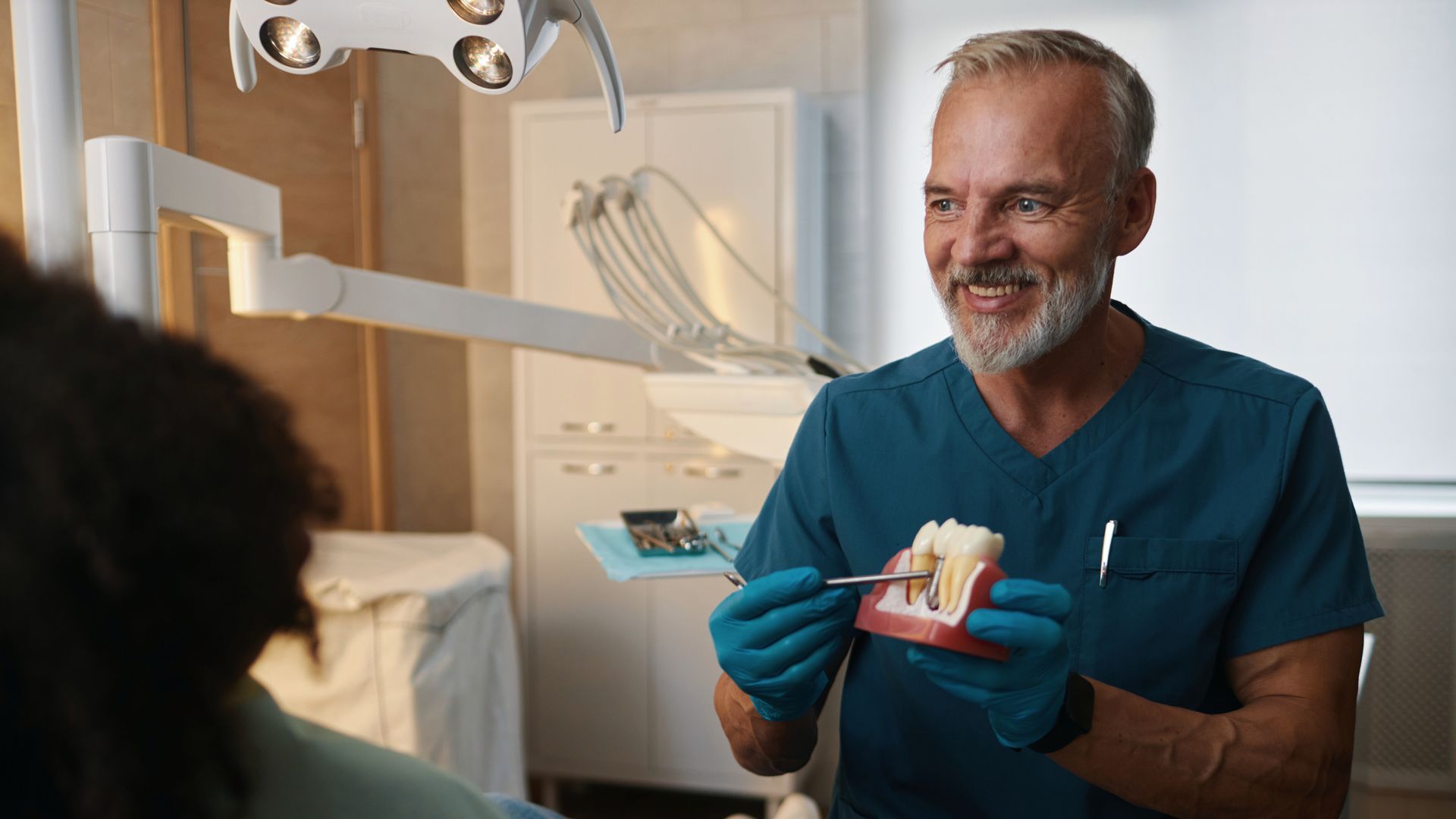
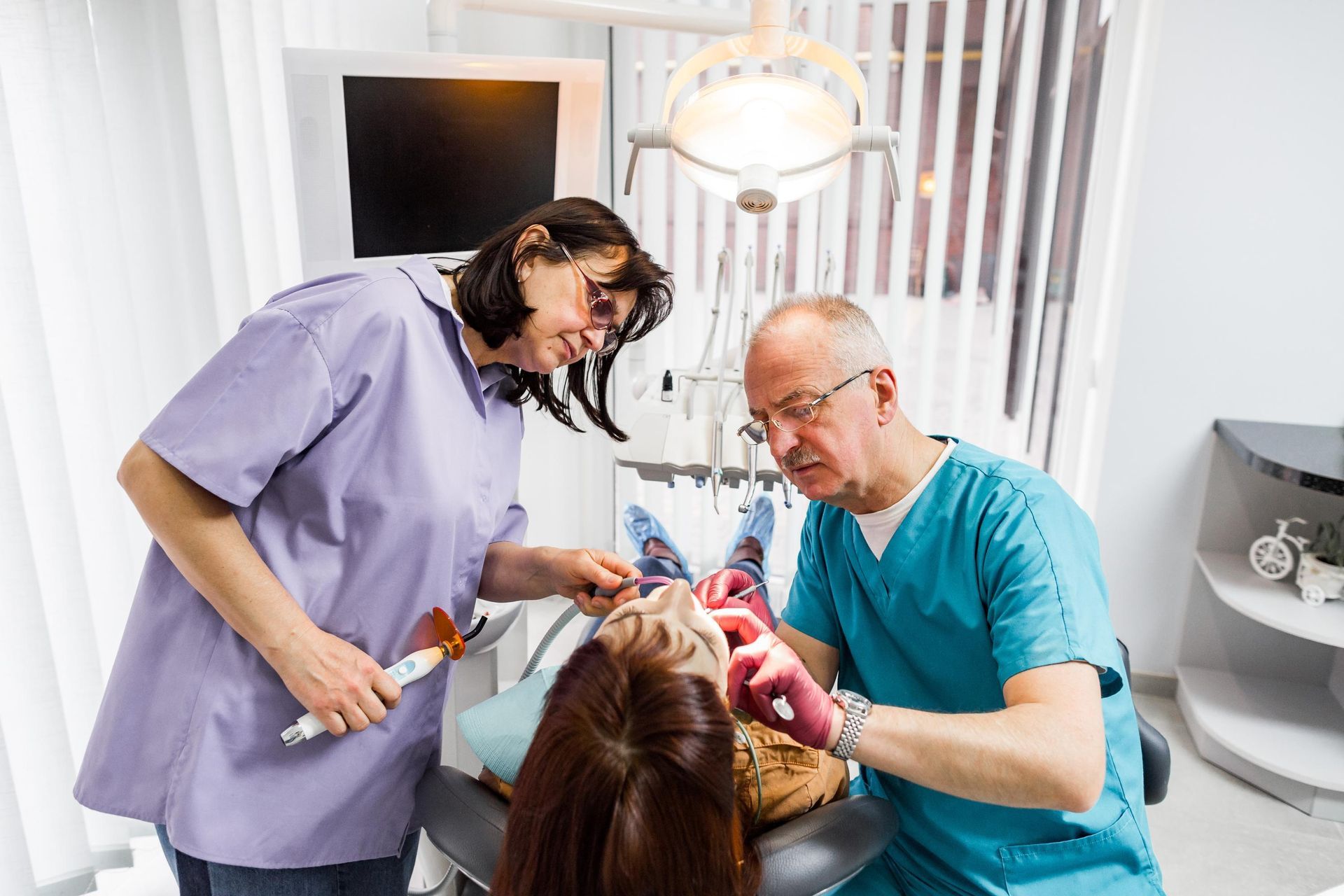

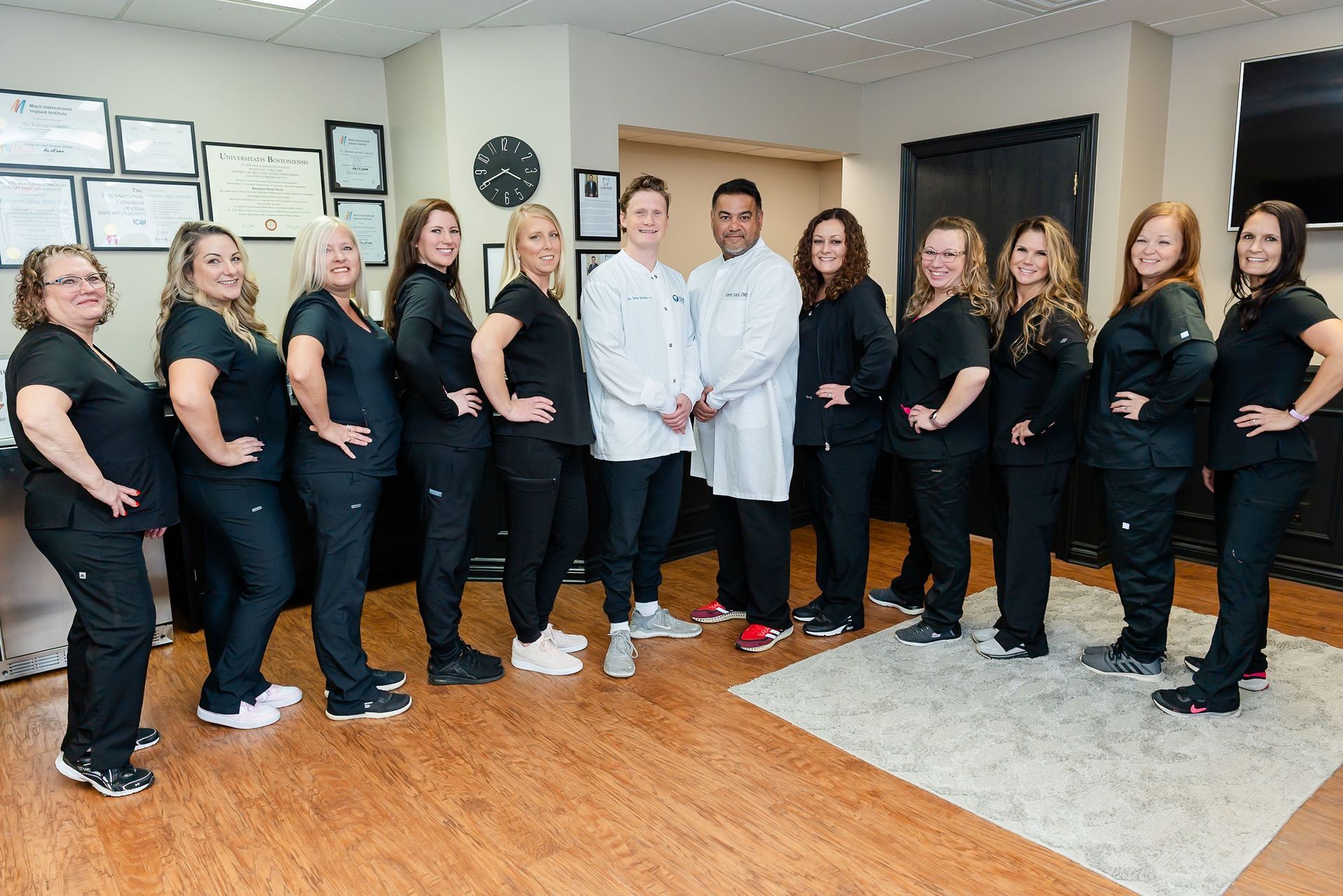
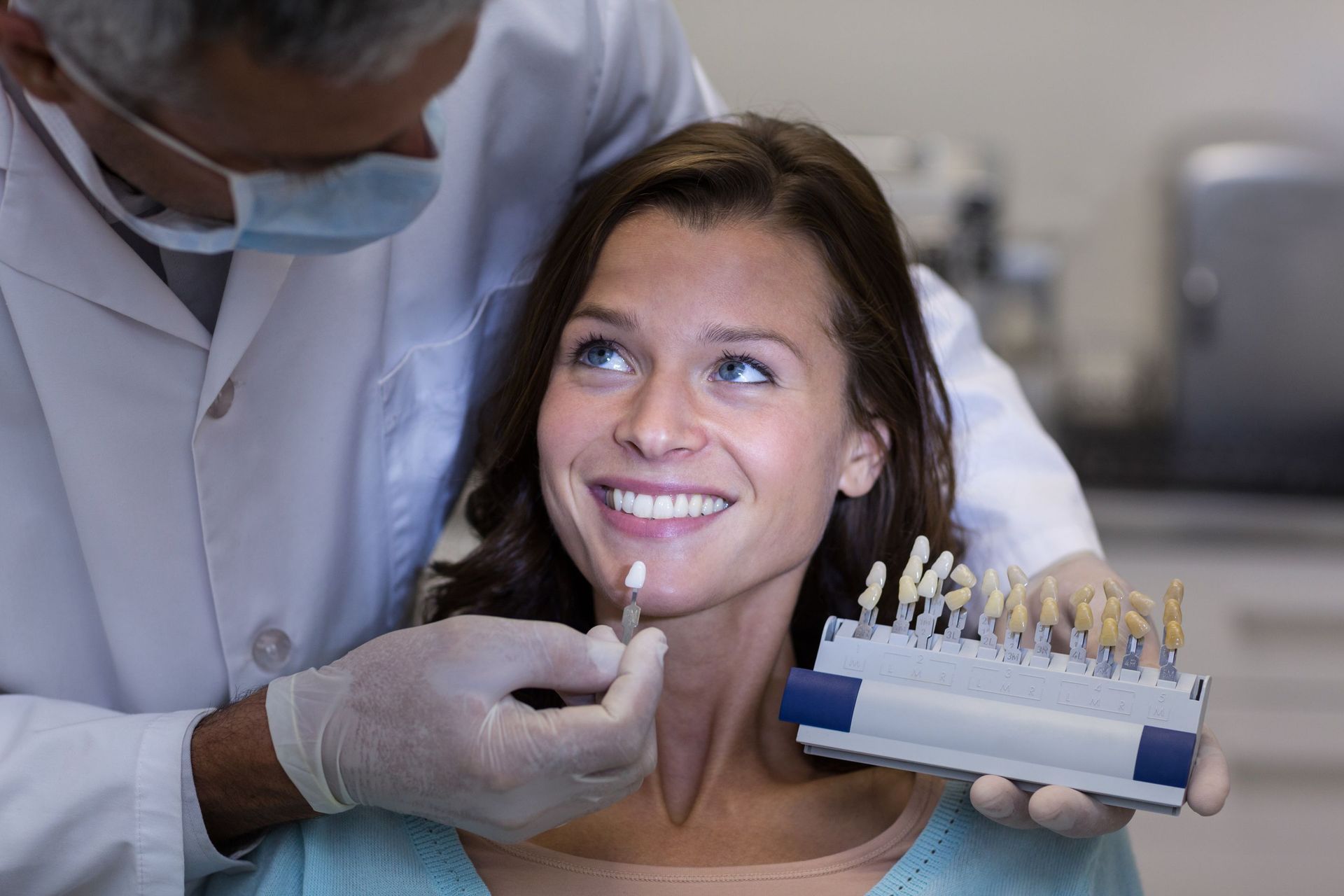
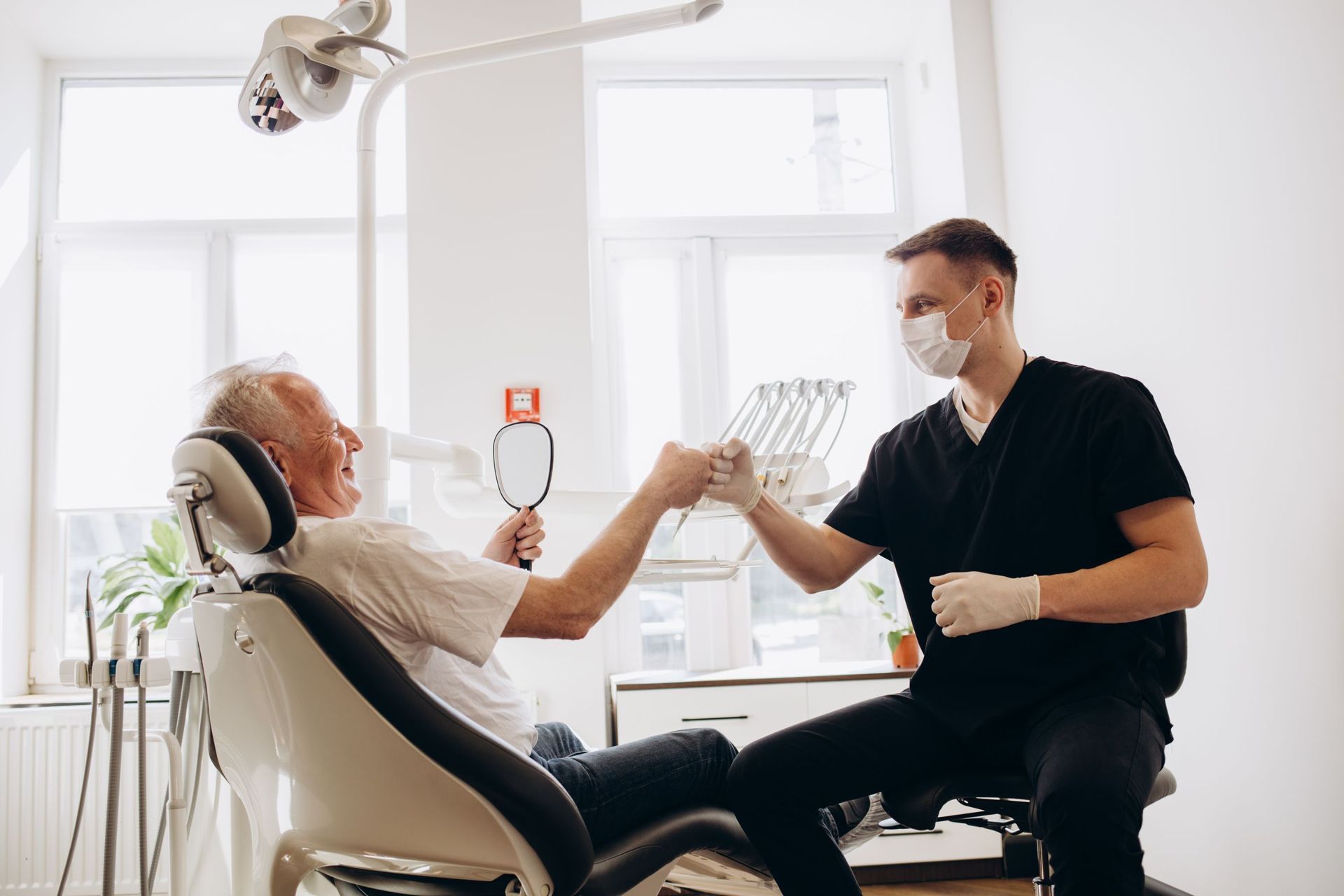
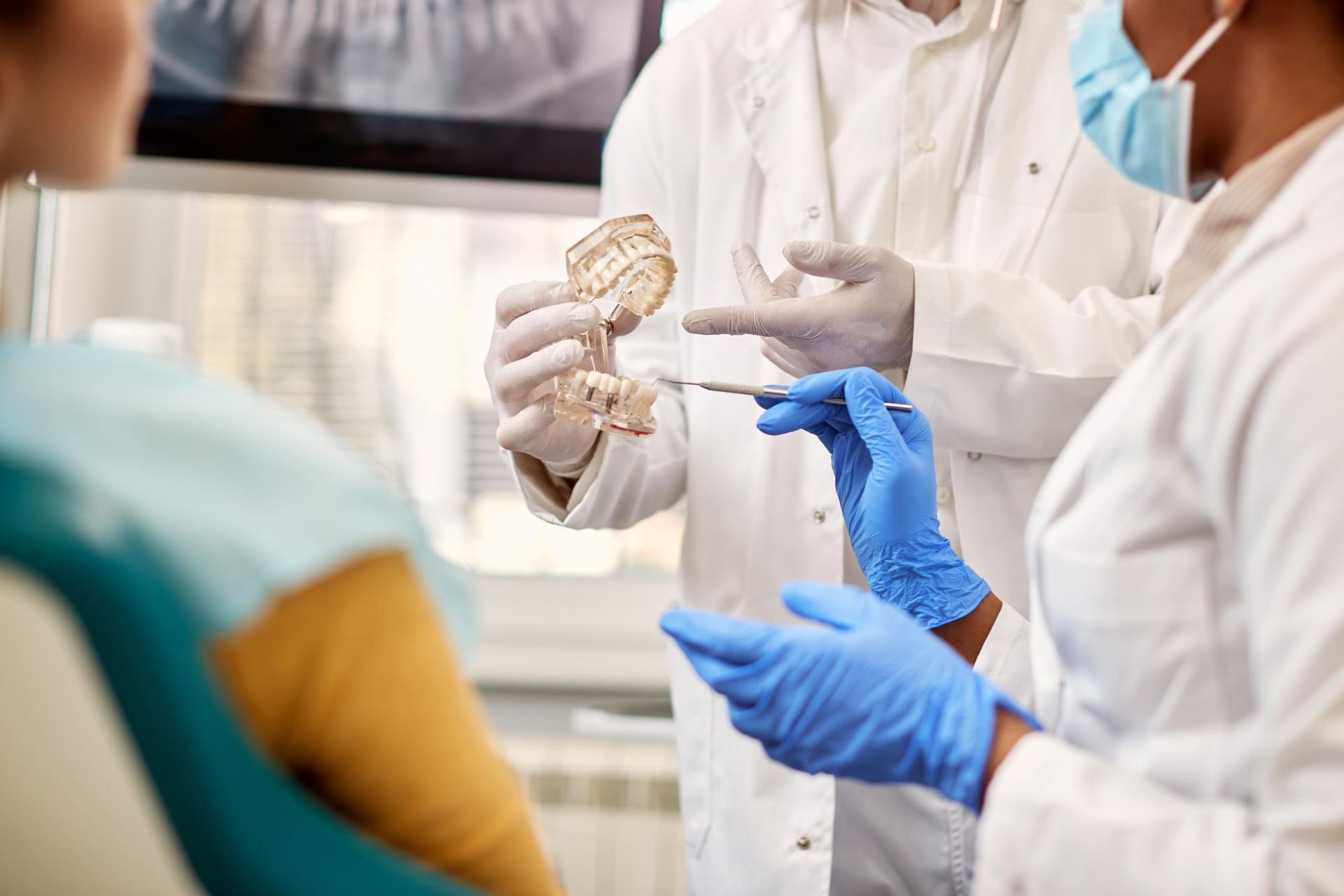

CONTACT US FOR A FREE CONSULTATION
Ready to Take the Next Step Towards a Full, Vibrant smile?
Start your journey towards exceptional dental care. Our mission is to help you unlock your perfect smile and embrace the essence of quality dentistry at its finest.

Contact Information
Request a Free Consultation
For more information about our services or to schedule an appointment, call us at (586) 228-0909 or complete the form below we’ll get back to you as soon as we can.
Our Services
Quick Links
Contact Information
smiles@mylakesidedentist.com
15400 19 Mile Rd Suite 180
Clinton Township, MI 48038
All Rights Reserved | Lakeside Family & Implant Dentistry



